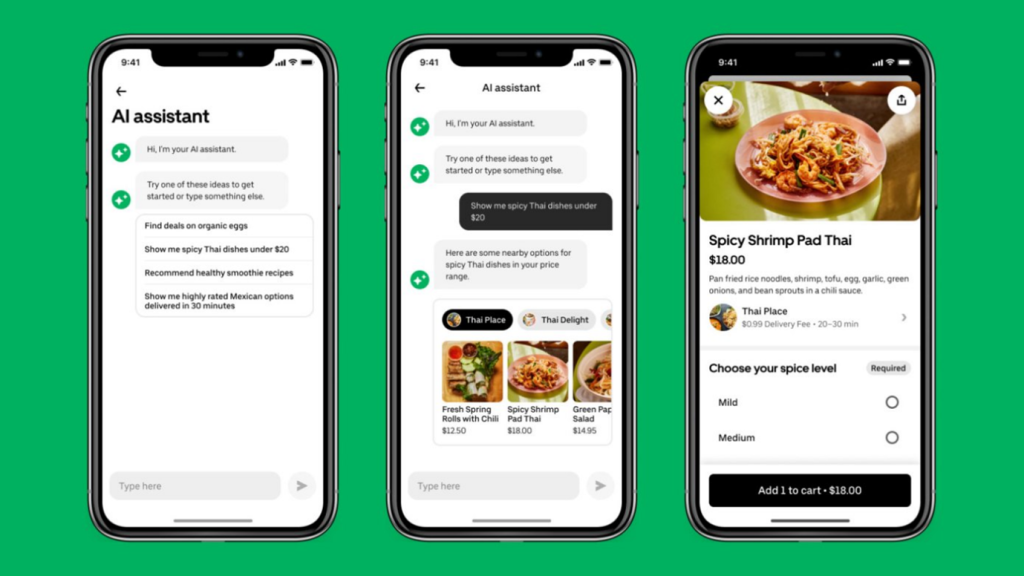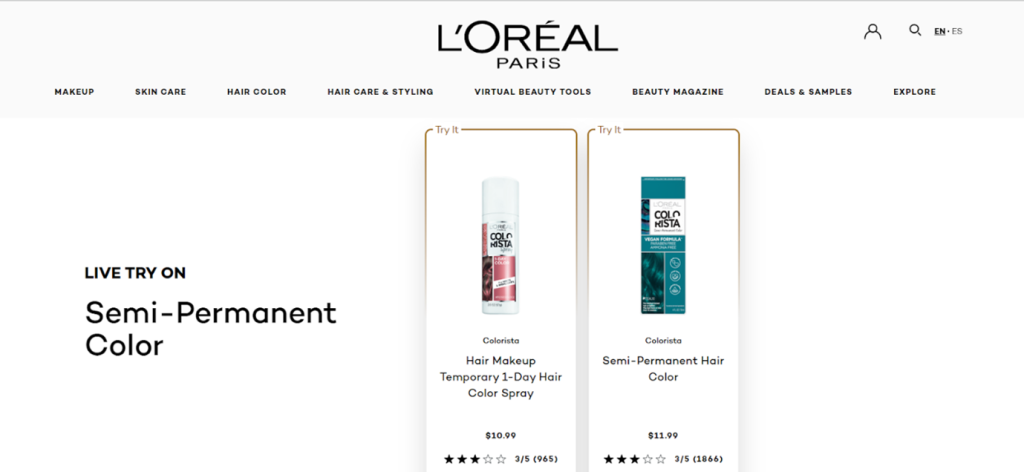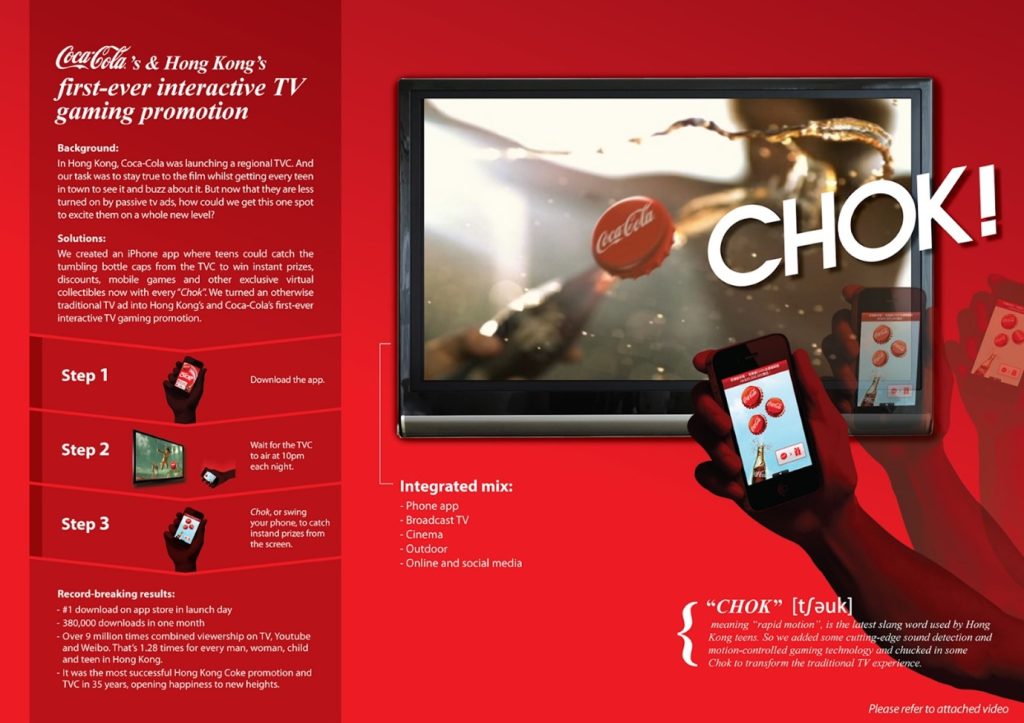Mobile Marketing Strategy: Leveraging Interactive Ways for Success
Table of Contents
The mobile revolution is transforming the way businesses interact with their customers. With the majority of web traffic now originating from mobile devices, it’s a necessity for businesses to adopt an innovative mobile marketing strategy.
However, simply having a mobile-optimized website is not enough to captivate mobile users. To truly engage and connect with them, businesses must create interactive experiences that foster engagement and encourage interaction with their brand.
Well, if we are being honest, mobile marketing’s needs and importance have never been questioned.
But the million-dollar question is how to do that.
But before that, let’s take on a very fundamental question, shall we?
What is Mobile Marketing?
Mobile marketing is the use of various marketing strategies and techniques tailored for mobile devices, such as smartphones and tablets. It covers a wide range of activities aimed at reaching a target audience on their mobile devices.
The goal is to connect with and market to consumers while they are using mobile devices, considering factors like location, preferences, and behavior to create targeted and personalized experiences.
Let’s take a look and understand how mobile marketing actually works.
How does Mobile Marketing Work?
Mobile marketing works through various channels and strategies to reach and engage users on their mobile devices. Here are some specific channels to understand how mobile marketing operates:
Mobile Advertising
Advertisers create and display ads specifically designed for mobile platforms. This can include display ads, in-app ads, and video ads. Mobile advertising platforms often use data such as location, device type, and user behavior to target ads more effectively.
Mobile Apps
Many businesses create mobile apps to provide additional value to users. These apps can serve various purposes, such as e-commerce, entertainment, utility, or communication. Moreover, incorporating AI-Powered Mobile App Development can significantly enhance the functionality and user experience, offering personalized recommendations, efficient problem-solving capabilities, and seamless automation.
SMS Marketing
Short Message Service (SMS) is used for sending promotional messages to users’ mobile phones. SMS marketing can include special offers, discounts, or notifications.
Mobile-Optimized Websites
Businesses ensure that their websites are optimized for mobile devices, providing a seamless and user-friendly experience. This involves responsive design, fast loading times, and mobile-specific features.
Location-Based Marketing
Utilizing the location data of mobile users, businesses can send targeted promotions, discounts, or notifications when users are near a physical store or a specific location.
QR Codes
Quick Response (QR) code technology allows users to interact with marketing materials, products, or advertisements using their mobile devices. This can lead to promotions, additional information, or special offers.
Social Media Marketing
Mobile devices are a primary platform for social media use. Businesses leverage social media platforms to run targeted ad campaigns, share content, engage with users, and drive traffic to their mobile-optimized websites or apps.
Now that we know how mobile marketing works for specific channels, let’s take a look at why we need a mobile marketing strategy in the first place.
Why do we need a mobile marketing strategy?
A mobile marketing strategy is essential for several reasons:
Mobile Usage Dominance
Shift in User Behavior: With the majority of internet users accessing content through mobile devices, businesses must align their strategies with this shift in user behavior.
Connectivity of Mobile Devices: Smartphones are primarily responsible for providing instant constant connectivity. Having a mobile marketing strategy ensures that your brand is present where your audience spends a significant amount of time.
Enhanced User Experience
Optimized Content: A mobile marketing strategy ensures that your content is optimized for mobile devices, providing a seamless and enjoyable user experience.
Responsive Design: Mobile-friendly websites and apps with responsive design elements contribute to positive user interactions.
Increased Engagement
Direct Communication Channel: Mobile devices offer a direct and personalized communication channel to reach users through various mediums, including apps, SMS, push notifications, and mobile-friendly emails.
Push traffic serves as a direct communication channel, leveraging mobile devices to deliver personalized messages to users through various mediums like apps, SMS, push notifications, and mobile-friendly emails. This direct line of communication enables marketers to engage with their audience in a targeted and timely manner, enhancing the effectiveness of their campaigns.
Moreover, push traffic facilitates interactivity by enabling interactive experiences such as quizzes, polls, and gamified content. These interactive elements not only capture users’ attention but also encourage active participation, leading to increased user engagement and a more immersive brand experience. Overall, push traffic empowers marketers to establish meaningful connections with their audience, driving better results and fostering long-term.
Interactivity: Mobile marketing allows for interactive experiences, such as quizzes, polls, and gamified content, resulting in increased user engagement.
Social Media Dominance
Social Media Presence: Many social media interactions occur on mobile devices. A mobile marketing strategy ensures your brand’s effective presence on social media platforms where your audience engages the most.
App Utilization: If your business has a mobile app, a mobile marketing strategy helps in promoting app downloads, user engagement, and mobile app retention.
Don’t believe us? Take a look at let’s take a look at the top mobile marketing strategy statistics of 2024.
Top Mobile Marketing Strategy Statistics in 2024
1. In 2025, the number of mobile users is estimated to reach 7.49 Billion worldwide.
2. 81% of active Facebook users access the platform exclusively through their smartphones.
3. In 2023, mobile advertising will surpass desktop for the first time, with 51% of ad spending going towards mobile campaigns and 49% allocated to desktop.
4. 48% of customers feel that a business neglecting to make its website mobile-friendly demonstrates a lack of concern for its customers.
5. 40% of users will choose another search result if the first one isn’t optimized for mobile. Likewise, unattractive or slow-loading websites are more likely to get abandoned, with customers unwilling to waste their time.
6. Content remains the key to success, even on mobile devices. 91% of mobile users prioritize quality content, making it one of the most effective tools for introducing customers to your brand. By regularly reviewing and refining your content marketing strategy, you can ensure it delivers maximum impact.
7. Mobile push notifications already enjoy high open rates, but incorporating even simple personalization strategies can boost them by up to 9%.
8. People often mark promotional emails as spam, but a mere 1% of SMS marketing messages are marked as spam.
As we now understand, mobile marketing is essential for any business to succeed in today’s competitive environment. But traditional marketing techniques have lost their charm and businesses need something extra to engage their customers.
Interactive Content: The Gateway to Mobile User Engagement
Traditional approaches like pop-up ads and QR codes fall short in this evolving mobile world. Enter interactive content—a two-way communication channel. It puts control in the hands of customers, providing real-time value.
Interactive content refers to any type of content that allows users to actively participate and interact. This encompasses a wide range of engaging experiences, including quizzes, polls, calculators, and more. Interactive content is particularly well-suited for mobile marketing because it empowers users to interact with your brand on their terms, leading to increased engagement, brand awareness, and customer loyalty.
Well, now that we have understood the value of incorporating interactive content into your mobile marketing strategy, let’s take a look at how to do it!
7 Ways to Add Interactive Content to Your Mobile Marketing Strategy
There are numerous ways to integrate interactive content into your mobile marketing strategy. Here are a few ideas:
1. Surveys and Polls
Gather customer feedback and insights through interactive surveys and polls that assess their preferences, knowledge, or opinions.
Polls can foster a sense of community and encourage participation by allowing users to share their opinions and engage with your brand.
Also, you can encourage users to share their survey responses on social media, amplifying your reach and generating organic engagement.
This valuable data can inform product development, marketing campaigns, and overall brand strategy.
2. Calculators
Empower customers to make informed decisions by providing interactive calculators that help them estimate costs, compare options, or calculate measurements.
You can take Outgrow’s “Down-payment calculator” for example.

Users can calculate their down payments for their homes by just providing the estimated cost of their desired home.
Isn’t that amazingly easy?
3. Quizzes
When integrated into your mobile marketing strategy, quizzes contribute to increased user engagement, heightened brand awareness, and the acquisition of valuable data on user preferences. This, in turn, empowers businesses to craft more targeted and effective marketing campaigns that resonate with their mobile audience.
Engage users with interactive quizzes that not only entertain but also educate. Create quizzes related to your industry, products, or fun topics to capture user interest and knowledge.
You can take a look at Outgrow’s “Which Car Suits You The Most” Quiz for inspiration.

You just need to answer a few questions about your personality, color preferences, and age group. The quiz will then provide you with a personalized car suggestion while asking for your details. This type of interactive quiz can help businesses make better customer profiles.
4. Giveaways
Giveaways enhance brand visibility, create a buzz on social media, and encourage the audience to interact. This leads to a broader and more engaged audience.
Run interactive giveaways or contests where users can participate for a chance to win prizes. Encourage social media sharing or referral actions to boost participation and extend your reach.
5. Chatbots
Chatbots offer real-time engagement, enhance customer support, and collect valuable user data for refining marketing strategies and personalizing future interactions.
Implementing chatbots enables instant and interactive communication with users on mobile devices. Whether answering queries, providing information, or guiding users through personalized experiences, chatbots play a pivotal role in enhancing the overall mobile user journey.
You can take a look at UberEats Chatbot for inspiration.

By learning user preferences through chats, this chatbot can recommend restaurants and dishes based on their individual tastes. This helps in making Uber Eats’ mobile marketing campaigns more targeted and effective.
6. Interactive Product Demos
Showcase your products and services in an immersive and engaging manner through interactive product demos that allow users to explore features and functionalities.
L’Oréal Hair Color Genius app uses facial recognition technology to help users find the perfect hair color.

By analyzing the user’s hair color and skin tone, the app recommends suitable shades from L’Oréal’s hair color range. This interactive experience provides personalized recommendations and builds trust with the brand.
7. Augmented Reality (AR) Experiences
Bring your brand to life with immersive AR experiences that overlay digital content onto the real world, enhancing product visualization and engagement.
The IKEA Place app utilizes augmented reality (AR) technology to allow users to virtually place IKEA furniture in their homes, visualizing how it would look and fit in their specific space.

This interactive experience significantly increases product engagement and purchase intent.
Well, now that we have understood some of the ways to add interactive content to your mobile marketing strategy, let’s take a look at some of its use cases.
Use Cases of Interactive Content for Mobile Marketing
Enhanced Engagement
Interactive content inherently captures attention and sparks interest, leading to longer attention spans and enhanced recall among mobile users.
Unlike passive content, interactive content demands user involvement, encouraging them to explore and discover more. This translates to longer on-page times and deeper engagement with your brand.
Brands like Nike and Adidas allow users to customize shoes and personalize clothing online, creating a personalized and engaging experience that increases product interest and purchase intent. This helped not only tweaking their marketing campaigns but also custom packaging boxes for products to help provide better service.
Deeper Customer Understanding
Interactive experiences provide valuable insights into customer preferences, needs, and pain points. This information can be leveraged to craft more targeted and effective marketing campaigns.
You can take Outgrow’s survey for example.

In this survey, you need to answer just a few simple questions about your customer base and niche. You can leverage these types of interactive content to have a deeper understanding of your customers.
Increased Brand Awareness
Interactive content creates a memorable brand experience that lingers in the minds of mobile users, fostering brand awareness and recognition.
Interactive elements create a sense of novelty and surprise, capturing user attention and leaving a lasting impression. This distinctiveness translates to better brand recall and association.
Dove’s “Real Beauty Sketches” campaign: This interactive video used facial mapping technology to demonstrate the power of positive self-perception, generating significant buzz and global brand awareness for Dove.
Strengthened Customer Loyalty
Interactive experiences foster stronger relationships with customers, cultivating trust and customer loyalty, which translates into repeat business and increased brand authority.
Interactive content invites active participation and dialogue, fostering a sense of connection between customers and your brand. This personal touch builds trust and loyalty, encouraging customers to choose your brand over competitors.
Spotify’s “Discover Weekly” playlists: This personalized playlist feature uses data and algorithms to recommend new music to users based on their listening habits. This proactive approach to delivering relevant content builds trust and strengthens customer loyalty towards Spotify.
With so many benefits of having interactive content in your mobile marketing strategy, many brands have been using them. Let’s take a look.
Real-World Examples of Interactive Content in Mobile Marketing Strategy
Numerous brands have successfully leveraged interactive content to enhance their mobile marketing strategies. Here are a few notable examples:
Coca-Cola
Coca-Cola’s Chok campaign captivated mobile users with an interactive game that encouraged them to shake their phones to win gifts. This gamified approach resulted in increased brand awareness and engagement.

The North Face
The North Face’s #SeeForYourself campaign catered to outdoor enthusiasts by creating an interactive map that allowed users to explore various hiking trails. This valuable tool reinforced The North Face’s position as a brand that understands the needs of outdoor adventurers.

Visit here for more such examples.
Metrics to Track the Impact of Mobile Marketing Strategy
Tracking the metrics of your mobile marketing strategy is crucial for evaluating its effectiveness and making informed decisions to optimize performance. Hence, here are key metrics to consider and how to track them:
App Downloads
Use app store analytics tools (e.g., App Store Connect for iOS, Google Play Console for Android) to monitor the number of downloads.
In-App Engagement
Use in-app analytics tools like Firebase or Mixpanel to measure user interactions within the app, such as screen views, button clicks, and time spent.
Mobile Website Traffic
Use web analytics tools (e.g., Google Analytics) to monitor mobile website traffic, including the number of visitors, pages viewed, and user behavior.
Conversion Rate
Analyze the percentage of users who complete a desired action, such as making a purchase or filling out a form. This helps measure the success of your conversion funnel.
Social Media Engagement
On social media platforms, track metrics such as likes, shares, comments, and clicks. Social media analytics tools provide insights into audience engagement.
By analyzing these metrics, you can gain valuable insights into the effectiveness of your mobile marketing strategy and make data-driven decisions for improvement.
Next Step For Mobile Marketing: Artificial Intelligence (AI)
Artificial intelligence (AI) plays a big role in shaping Mobile marketing’s future. Let’s take a closer look at how AI is transforming the way businesses connect with their mobile audience.
Predicting what users want
Imagine a tool that can predict what your customers will do next. AI algorithms analyze huge amounts of data to understand user behavior and preferences. This lets businesses create mobile marketing content that’s more likely to resonate with their audience.
Making things personal
AI helps businesses create personalized experiences for each user. It’s like having a personal shopper for your mobile marketing! AI can recommend products or services based on individual preferences, making each user’s journey unique and engaging.
Optimizing marketing for better results
AI is like a superpowered marketing assistant. It can analyze data in real time and suggest ways to improve your campaigns, such as testing different versions of your ads or adjusting prices based on demand.
Mobile Marketing Automation
Marketing automation streamlines repetitive tasks and improves efficiency, allowing marketers to focus on more strategic initiatives. In mobile marketing, automation plays a crucial role in:
- Personalized messaging: Delivering targeted messages based on user data, demographics, and behavior.
- Trigger-based campaigns: Automatically send relevant content based on specific user actions, such as app downloads or purchases.
- Lead nurturing: Engaging leads with personalized email campaigns and push notifications to nurture them into customers.
- Social media scheduling: Scheduling and publishing content across social media platforms to optimize engagement and reach.
- Reporting and analytics: Automating data collection and analysis for deeper insights into campaign performance.
Conclusion
A mobile marketing strategy is essential for staying competitive in today’s world where mobile devices play a central role. It allows businesses to effectively reach, engage, and retain their target audience in a mobile-centric world.
As mobile technology continues to evolve, interactive experiences will become even more immersive, personalized, and data-driven, allowing businesses to connect with their customers on a deeper level.
If you’re not already using interactive content in your mobile marketing strategy, now is the time to start.
Outgrow, a powerful no-code platform enables you to effortlessly create a wide range of interactive content experiences, including quizzes, polls, calculators, and more, without requiring any coding expertise. Outgrow’s user-friendly interface and powerful drag-and-drop functionality empower marketers to seamlessly create engaging content that resonates with their target audience in just a few clicks.
And, the best part is that Outgrow is offering a free 7-day trial where no credit info is required!
So, what’s stopping you now?
FAQs

Prajwal is a full-time content marketer at Outgrow. With strong expertise in thorough research, he loves to stay up-to-date with the latest marketing trends and technological developments. Outside of work, you’ll find him embracing the great outdoors; from grilling to thrilling physical activities, he’s always up for a good time.




